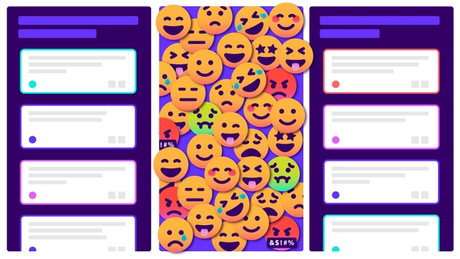Agile best practice
8 min read
How to Lead Agile Retrospectives for Constant Improvement
Tue Jun 15 2021

Agile retrospectives offer opportunities for introspection. As with many things in life, the end is almost as important as the beginning. That’s why it’s important to improve what went wrong throughout the iteration and repeat what went well.
The retrospective meeting should be held at regular intervals to analyze team processes and outcomes. Reflecting on the last sprint should help guide the next one.
Sprint retrospectives are also informal but structured. Informality is a typical characteristic of the retrospective meeting, which motivates problem-solving.
In this article, we’ll review what an agile retrospective is, how to lead it successfully, and how to use the retrospective format.
What is an agile retrospective?
An agile retrospective is also known as the sprint or sailboat retrospective.
The Scrum Guide provides a clear definition of the agile retrospective. The Guide says the agile team can use the sprint retrospective as an opportunity to gather rapid feedback for continuous improvement. Continuous improvement takes place through ongoing teamwork and work analysis.
During the meeting, the team discusses what went well and what didn’t. They should identify the good, that they will aim to repeat as well as the areas to adjust, so the next sprint can go more smoothly.
Here’s how the 12 principles of the Agile Manifesto describes retrospectives: “At regular intervals, the team reflects on how to become more effective, then tunes and adjusts its behaviour accordingly.”
How to implement a sprint retrospective format
You can either implement the agile retrospective after each sprint, quarter, or the entire project. However, you should have a retrospective at regular intervals to continue iteration and improvements.
Use a retrospective format for each meeting. Creating a retrospective board is a great place to start, it sets the scene for the team involved and they know exactly what is expected.
We've added retrospective boards to Easy Agile TeamRhythm to help you and your team through more of the agile cycle, from planning through to review.
Here’s how to plan the sprint retrospective:
1. Preparation
Like a standup meeting, your preparation time for the retrospective should take about 15 minutes. The retro is like a lean coffee meeting where the agenda is relatively unstructured but democratic. Everyone gets to contribute.
Ideally, you want to have a retrospective board where team members can capture feedback as it arises. Be sure to remind team members to add their thoughts to the board prior to the meeting.
The retrospective board helps guide the retro process through tasks where the team fell short or excelled with action items. It also helps to identify areas of improvement and the actions the group must apply to effect change.
If in-person team members don’t use software to facilitate their agile retrospective, they can use another technique. This technique usually involves a whiteboard, Post-Its, and markers to guide brainstorming throughout the meeting.
Whichever methodology (Scrum or Kanban) the scrum master uses, a visual representation helps facilitate the best possible outcomes for future workflows.
Hot tip 🔥
It is best to rope in a neutral facilitator or agile coach to guide this process. This technique should help encourage team members to participate and share without feeling pressured.
2. Use the retrospective template to guide your agenda format
The retrospective board helps direct the agenda for the meeting format. Whether you choose start, stop, continue, glad, sad, mad, or our team's personal favourite - high notes, low notes and keeping the beat. Make sure you customise it to suit your teams needs.
Typically, the process follows six steps:
2.1 Set the stage
Refresh your memory about themes and stories in the last sprint if necessary. Set a timer and give the team a little extra time to add any last minute thoughts or items that may be missing
At the start of the retrospective, the Scrum master should introduce the product owner, team members, and other relevant stakeholders.
Welcome everyone and let them know that their participation is valuable. Inform team members that honesty is critical in producing positive outcomes. Ensure new teams know that questions are welcome, and that sharing experiences is vital to a successful sprint retrospective.
Throw in an icebreaker to set the tone of the meeting. A brief game of “two truths and one lie” can quickly promote a relaxed atmosphere if you have enough time.
Let the team know the amount of time it should take to complete each section of the sprint review. To keep everyone on track, the timer can come in handy again here.
2.2 Celebrate the wins
Congratulate team members who excelled. Discuss posting success stories on LinkedIn or elsewhere before moving on with the sprint review. Interact with items made on the retro board, react with an emoji or leave a comment.
2.3 Gather data
Data gathering includes collecting information from team members about sprint retrospective problems. The purpose is for the team to uncover the root cause of the problems.
Team members begin this process by sharing sprint experiences. Whether the experience was good, bad, or ugly—share it. It’s always a good idea to capture how everyone is feeling, take a mood survey to understand the overall team feeling.
Share the processes you used and which milestones you accomplished. If team members applied new technologies, share how those went. If they used new tools, let everyone know the pros and cons of each tool. Whatever the experience, let everyone know what worked well and what was a disappointment.
The Scrum master can facilitate this phase by using the “five whys” methodology. The “five whys” essentially refers to asking why a problem occurred, five times. Repeating the question multiple times supports deep thinking to get to the root cause of the problem.
2.4 Brainstorm solutions
Once the team members identify the shortcomings of the previous sprint, they can brainstorm solutions.
The team meeting should now revolve around associations between problems and solutions. Linking problems and solutions involves understanding. Once the team understands their mistakes, they can brainstorm several solutions to fix each problem area with better action items.
Throw in as many ideas as possible to have several solutions for consideration. Once the team has alignment on the action item, be sure to capture this so the appropriate next steps can be taken.
The retrospective board in TeamRhythm sits alongside your work in Jira, so that retrospective items can be added as the sprint or version progresses. Action items from the retrospective can be turned into Jira issues so that items worth actioning aren’t lost at the end of the discussion.
The Scrum master should also ensure that the team has the authority to follow through with relevant solutions at this stage. If they don’t have the authority to solve problems, the Scrum master must bump the issue up to a higher level.
2.5 Select viable solutions
Not all solutions from the brainstorming phase will be viable — ask the Scrum team, including the product owner, to choose three promising solutions for each problem. You can use different techniques to narrow this process, and ask team members to vote. You might want to try a dot vote, or up vote by giving the solution a thumbs up.
The simple vote requires everyone to select the solution that resonates best with them in the follow-up activity. In the dot vote, meeting participants find the best three solutions by placing a dot on three of the ideas they believe hold the most value.
Lastly, the multiple vote system means that the scrum master gives everyone points. The scrum team must then give these points to one or more of the best ideas.
2.6 End the meeting
End the meeting on a positive note before continuing to the next sprint. Try to leave with:
- A detailed synopsis of the previous sprint
- A detailed sprint planning exercise for the next sprint meeting
- Clear action items and next steps
- Collaborate as a team to determine whether this outcome is effective or needs improvements for the next iteration
3. Sprint retrospective meeting outcomes
Software development teams can use the S.M.A.R.T. criteria to analyze their solutions. Getting the product owner's inputs is a valuable part of the retrospective meetings as they diversify priorities and perceptions
The agile coach or Scrum master takes the S.M.A.R.T. solutions and translates these into item actions. The Scrum master should ask team members to take responsibility for activities to promote ownership and encourage behavioral change.
Once the product owner agrees, each activity should then become part of the backlog.
How to achieve successful retrospectives from in-depth introspection
An in-depth introspection promotes continuous improvement and productivity. Following a retrospective template helps achieve these goals, while supporting integrated teamwork. The product owner also benefits from your team efforts with each sprint retrospective, which is a primary objective.
Gain team alignment with team retrospectives
Easy Agile TeamRhythm supports agile retrospectives, helping you and your team gain a shared understanding of the work, and how you work best together. Designed for Jira users, our goal is to help agile teams work together effectively.




